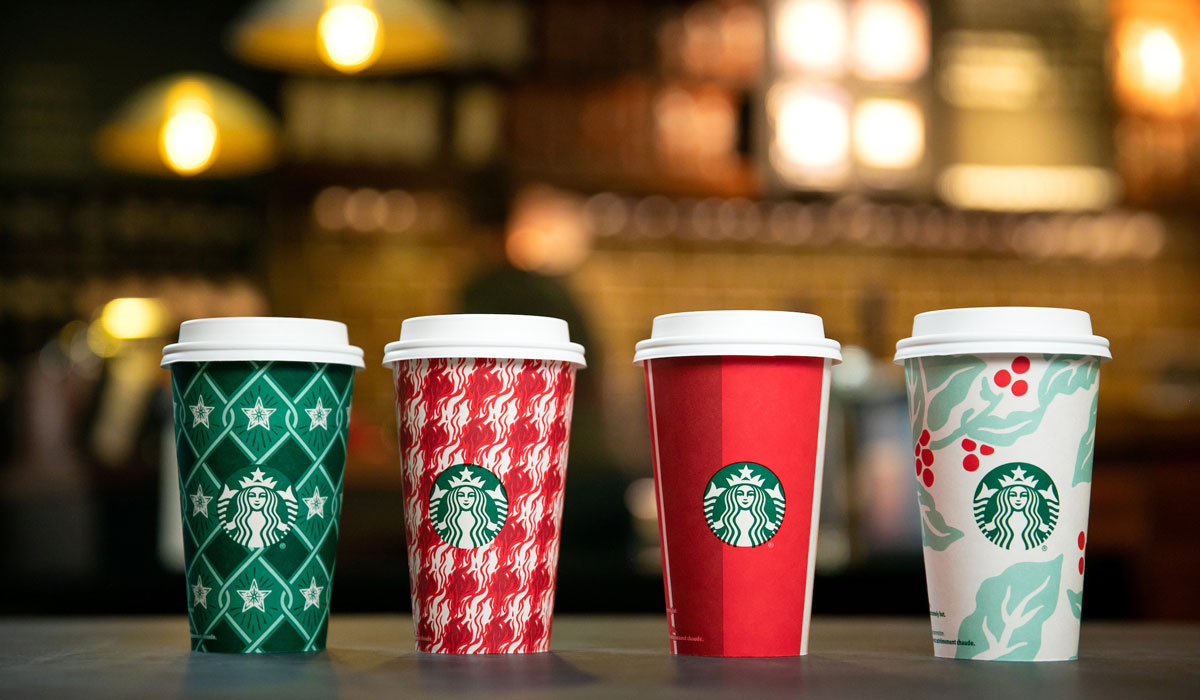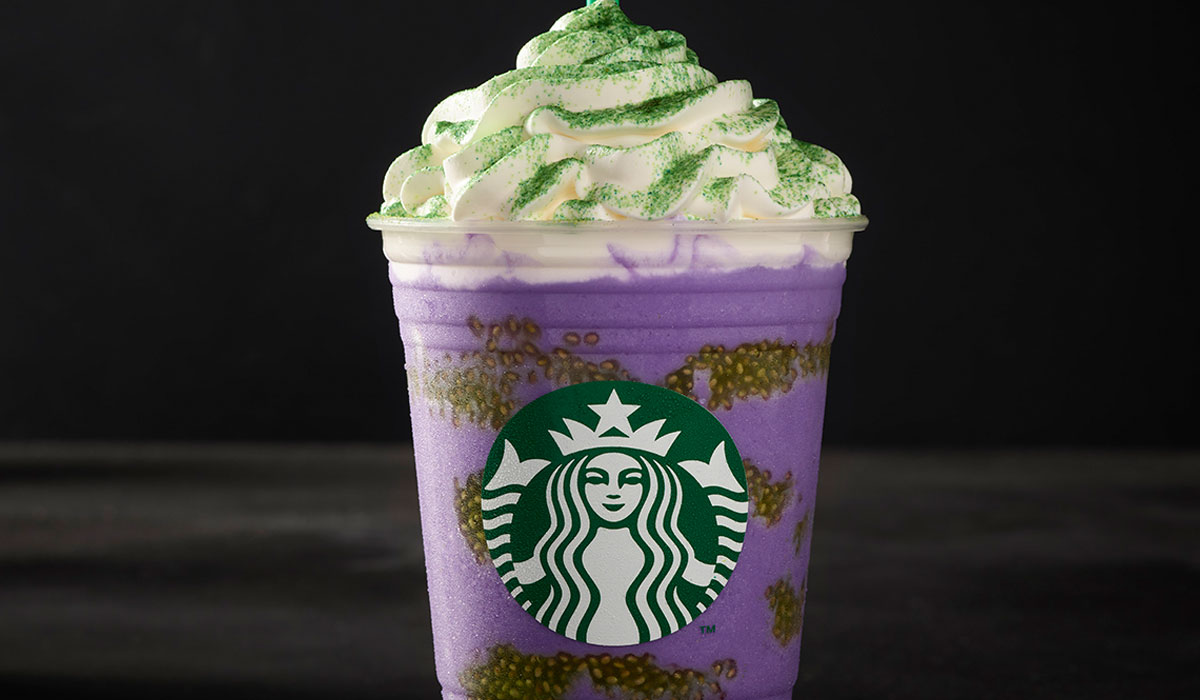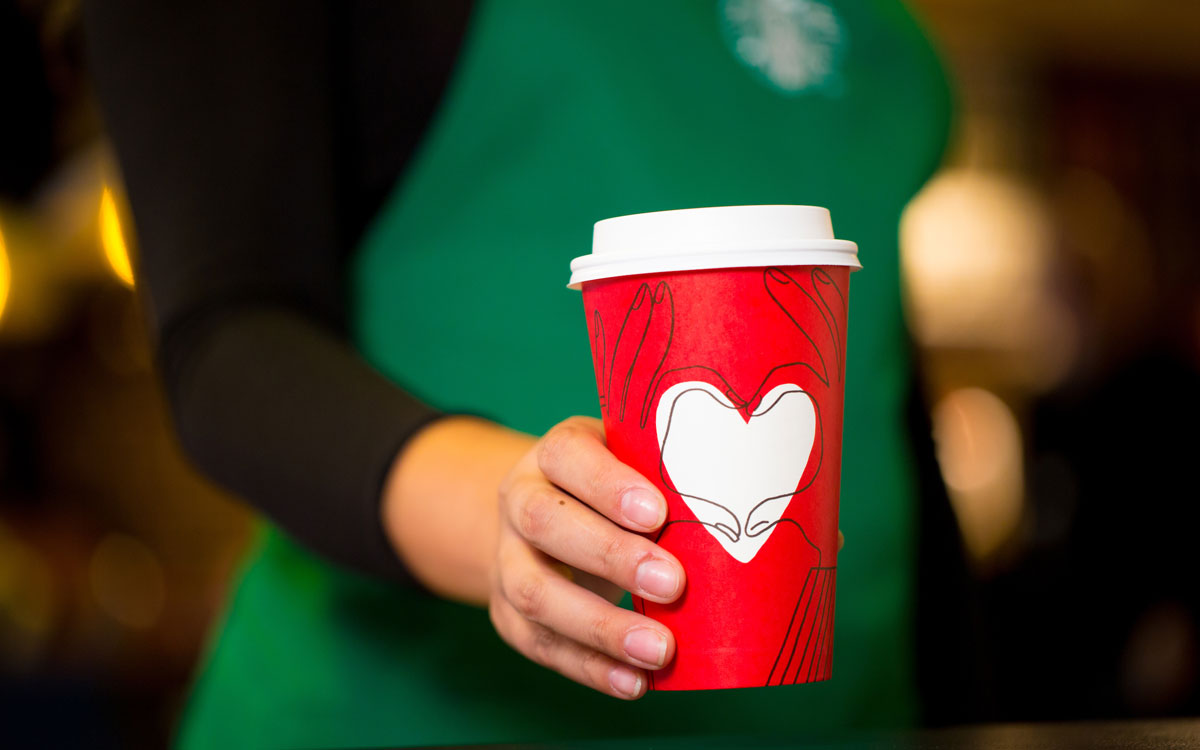Starbucks is back on the front foot. After a string of soft results, including its lowest comps in nearly a decade last quarter, the java chain surprised Wall Street with an expectations-battering Q4 Thursday afternoon. Starbucks posted same-store sales gains of 4 percent in the U.S. and Americas—its best in five quarters and easily ahead of analysts’ forecast of 2.7 percent. Adjusted earnings per share of 62 cents beat 60 cents. Revenue upped 10.6 percent to a record $6.3 billion from $5.7 billion last year (better than the expected $6.27 billion), and global same-store sales rose 3 percent over the 2.3 percent expectation. The news soared Starbucks’ shares more than 9 percent in evening trading.
Much went right for Starbucks in the quarter, but it was really anchored by a couple of progressions. One was beverage innovation, driven by Cold Brew, Refreshers, and ramped up installations of Nitro, which added roughly 700 stores in Q4 to reach 2,800 units at fiscal year’s end. Roz Brewer, Starbucks’ chief operating officer, who celebrated her one-year anniversary with the company last month, said in a conference call that beverage contributed 3 of the 4 points in comps growth—the strongest performance of the year. “And given it’s our highest margin category, we’re encouraged by this shift in comp growth,” she said.
For the full fiscal year, global comps increased 2 percent, driven by a 3 percent lift in average ticket. U.S. and Americas witnessed 2 percent growth, year-over-year.
Another Starbucks surprise
Typically speaking, this isn’t a quarter Starbucks lights up digital engagement. That’s usually reserved for the Red Cup-fueled rush of the holiday season. However, Starbucks grew its active Rewards members 15 percent, year-over-year, in the quarter to 15.3 million. That marked the strongest growth rate in seven quarters for Starbucks. Undeniably, this is a major deal for the java giant since Rewards customers drive nearly 40 percent of tender in the U.S. with mobile order and pay representing 14 percent of transactions.
So what changed?
Starbucks previously set an initiative of growing its “digitally registered customers.” In other terms, guests who are in the chain’s digital base but not in its Rewards program. Starbucks looked at this through WiFi signup, opening mobile order and pay to customers, and revising its Happy Hour to engage guests directly through digital via single-use coupons that ask customers to sign up through the Starbucks app or directly via email.
“Our customer connection scores, which includes ratings on cleanliness and speed of service, in Q4 showed improvement across all dayparts and regions with September ending at an all-time high.” — Roz Brewer, Starbucks’ chief operating officer.
In the quarter, Starbucks grew the number of “digitally registered customers,” from 6 million at the end of Q3 to 10 million at the end of Q4. That’s significant. Not just because it allowed Starbucks to engage with these guests directly via email with offers, like Happy Hour, but because of the possibility of Rewards conversions. Matthew Ryan, Starbucks’ chief marketing offer, said the chain began to see some of those digitally engaged customers take the next step. And, again, those locked-in loyal members drive higher check on average. “We continue to see year-on-year growth in spend per member. That is in the single digit range, again, and we’re very optimistic about that because that shows that our members are in fact engaging, even the ones we’ve had for a long time,” he said.
“… we have to think of it as the top of the funnel—an enabler of the relationships that we can create that lead people eventually into the Starbucks Rewards program,” he added. “So we expect to see that continue to contribute to incrementality, but over time. It’s not something that we would hang our hat on just yet. We’re moving in that direction.”
This is just the beginning of the push for Starbucks. Brewer said, as the chain gets to know its digitally registered customers “and what they want,” Starbucks will be able to tailor specific offers with the goal of converting them.
“We’re just beginning to send offers to this group of people. We have not yet begun to personalize and that’s something we expect to do later this year,” Ryan said. “It’s going to take us time to feel confident, attributing how much business comes from any particular segment of customers but we are very, very encouraged by the responsiveness we see to people who commit to a digital relationship. Remember that we’re not in the business of creating digital relationships for digital relationship’s sake.”
As this grows, Starbucks will become less reliant on media and more reliant on customers pulling information from the company.
“It’s something that’s a journey for us and we’re going to continue to go down that pathway,” Ryan said.

Priority No. 1
With the competition in beverage innovation and convenience heating up, Starbucks’ third-place standing has never been more critical. Dunkin’ is working to launch handcrafted espresso equipment in all stores and training employees on how to make handcrafted hot and iced espresso beverages—including cappuccinos and lattes.
Brewer said enhancing in-store experience is “our No. 1 priority.”
“That’s because we’ve always been about so much more than just great coffee,” she said. “We build brand love and loyalty through the human connection between partners and customers. This makes us who we are and this connection has always been at the heart of the Starbucks experience.”
“But we haven’t always made it easy for our partners to focus on their customers and truly lead in the moment,” Brewer added. “Complex tasks and unclear expectations often get in the way.”
Last quarter, Starbucks announced it wanted to cut 50 percent of current in-store administrative tasks by the end of fiscal year 2019, with the expectation of unlocking 2–3 hours daily for employees to focus on customer experience. She said Starbucks “made solid progress,” in Q4, freeing up to one-and-half hours per day of non-customer-facing tasks to customer-facing activity, depending on the store.
One example in the initiation of automated inventory in 32 stores for all food products. Starbucks assigned a team to address dense urban market performance with New York as the initial target. It also rolled out training to build leadership.

“And we’re starting to see this work pay off. Our customer connection scores, which includes ratings on cleanliness and speed of service, in Q4 showed improvement across all dayparts and regions with September ending at an all-time high,” she said. “Moreover, we’re confident these activities will continue to pivot the momentum in the stores to grow transactions with all our customers, including the infrequent customer.”
This is helping with afternoon business as well.
“… when we removed some of the tasks that are happening in the stores to get the stores more efficient, we freed up time for the partners to interact with customers throughout that afternoon daypart, moving some of that, the routine tasks to closing freed up time for them to interact,” Brewer said. “And so we’re seeing some nice movement between our customer connection stores and we know ultimately that relates to increased frequency and traffic.”
Drive thru, and portfolio strategy
In Q4, Starbucks units with a drive thru “well outperformed” café comps, Brewer said. More than 80 percent of new stores in fiscal 2018 were drive thrus. Naturally, this format will be a continued focus in fiscal 2019, Brewer said.
Drive thru, out-the-window, and mobile order and pay combined to reach more than 50 percent of the way Starbucks customers are ordering—up more than 10 percentage points in just two years.
Including the net closure of 313 Teavana-branded stores, Starbucks added 1,985 restaurants in fiscal 2018. Next year, the company expects to add about 2,100 net stores globally with same-store sales growth near the lower end of its current 3–5 percent range. By year’s end, Starbucks will have more than 31,000 units across the globe. China/Asia Pacific will drive about half of that new store growth, with an estimated 1,100 units, including nearly 600 in China (comps rose 1 percent in the region in Q4). Starbucks sees more than 600 net new stores in the Americas—a 4 percent increase, with the U.S. at plus-3 percent net of the accelerated U.S. store closures the chain discussed last quarter.
“Over the past year, our streamlined actions to simplify the business drove decisions to sell Tazo to Unilever, close the Teavana specialty retail stores, transition our e-commerce business to our channel partners and simplify our SKU structure,” CEO Kevin Johnson said. “More recently, we’ve taken steps to simplify work in our stores by automating inventory tracking and replenishment, which is enabling us to redirect more store partner time towards serving our customers. Business simplification is creating value through a more focused and more efficient operation.












